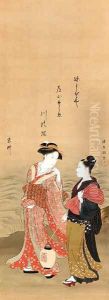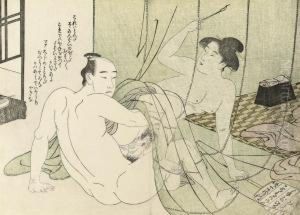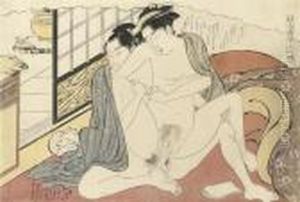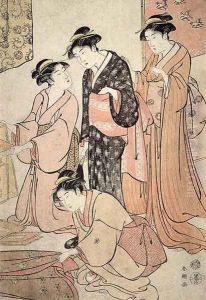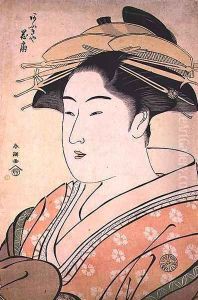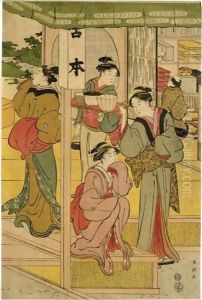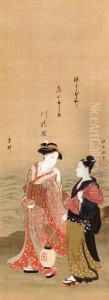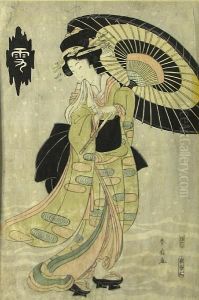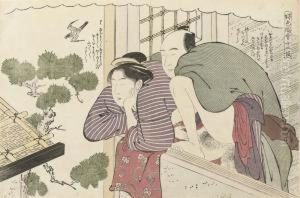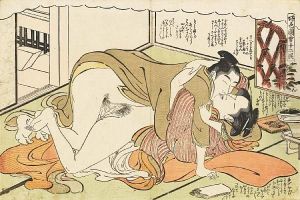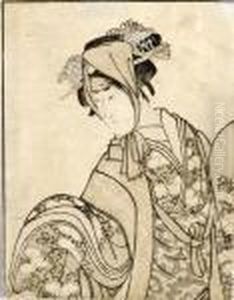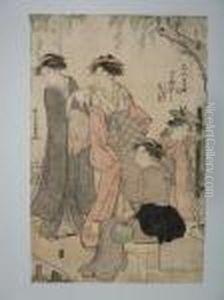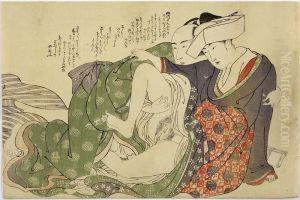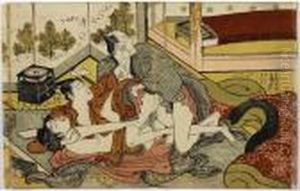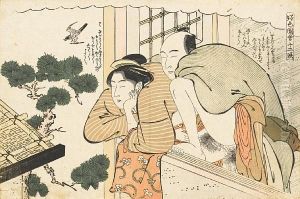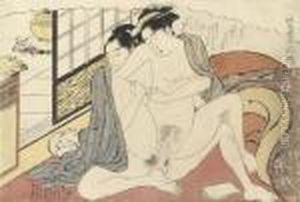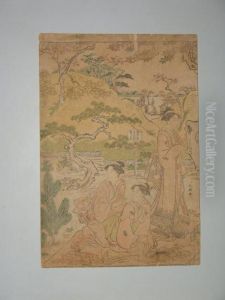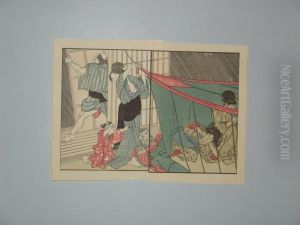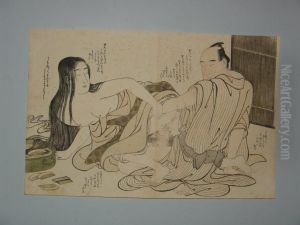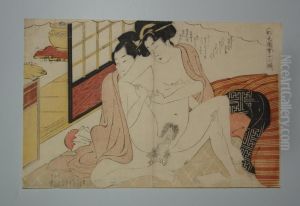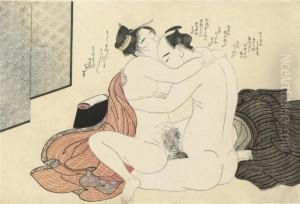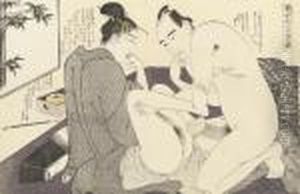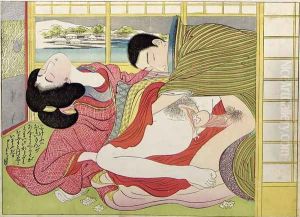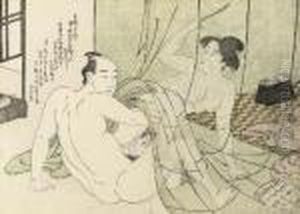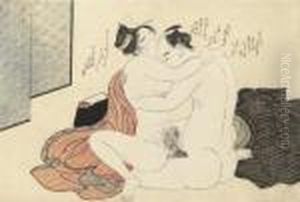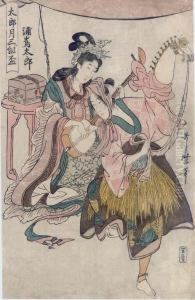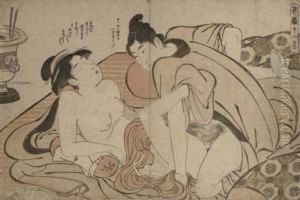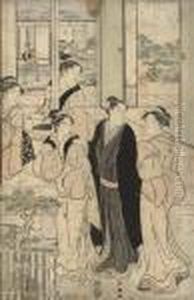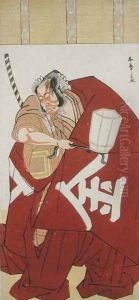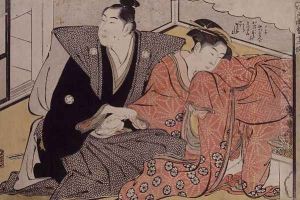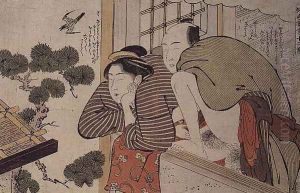Katsukawa Shuncho Paintings
Katsukawa Shuncho was a Japanese ukiyo-e artist, active during the late 18th and early 19th centuries, a period known for its rich cultural and artistic production in Japan. Shuncho's exact birth and death dates are not well-documented, which is not uncommon for artists of that era. He was part of the Katsukawa school, a lineage of artists who focused on depicting the 'floating world' or 'ukiyo' - a term that refers to the pleasure-seeking aspects of Edo-period urban culture, including kabuki theater, sumo, and the pleasure districts. Shuncho is best known for his bijinga, or pictures of beautiful women, a genre in which he developed a distinct style characterized by elegant figures with elongated proportions and refined, delicate features. He also produced landscapes and images of kabuki actors, but it is his bijinga that most clearly demonstrate his skill and have contributed to his lasting legacy in ukiyo-e. His work is noted for its subtlety, grace, and the clear influence of his contemporary, the celebrated artist Torii Kiyonaga. While Shuncho's works were popular during his lifetime, fewer of his prints have survived to the present day compared to those of his peers, such as Kiyonaga and Utamaro. This scarcity has made his pieces highly valued among collectors of Japanese art. Shuncho's influence extended to later generations, including the renowned ukiyo-e artist Hokusai, who is said to have been inspired by Shuncho’s use of line and composition. Despite the limited information about Shuncho's life, his contributions to the ukiyo-e genre and his distinctive style keep his memory alive in the world of Japanese art history.
